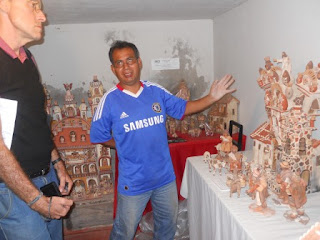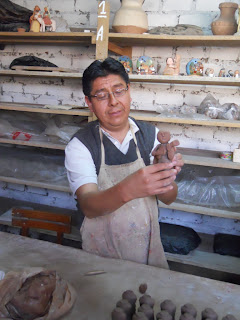From the time I was first introduced to fair trade I thought it was a good idea. I first learned of the concept when I was living in Northern Ireland in 1999. Derry, where I was living, became a “Fair Trade Town”. A special event was held at City Hall and I attended. There I got to sample fair trade tea, chocolate, and coffee and I heard a brief presentation on what fair trade is all about. The mix of social mission and business was appealing. That event had a big impact on me. It happened right about the same time I needed to choose a topic for my Master’s Thesis. With a bit of effort in convincing my professors it was a suitable topic, fair trade became the subject of my Thesis. The research I did in the 6 months or so it took me to complete my paper made me a believer that fair trade was effectively and efficiently providing much needed employment and resources to families and communities in developing countries. It’s a long story that I won’t go into here but it was through my research that I became introduced to Global Gifts where I am now employed.
 |
| Senora Toshinada, Maruca, and Joel swap stories about clients over lunch. |
Though my belief in fair trade has remained strong, it is always nice when I have it reaffirmed. My recent experience with Manos Amigas has done just that. During the recent capacity building training that Manos Amigas hosted for their artisan partners, I had a chance to speak with several different people about their work and their thoughts on fair trade. For lunch one day we all went to a nearby restaurant in Lima. Alison and I sat with 3 artisans during the meal. When talking about their business, all three shared stories of clients who treated them badly. For example, Joel spoke about a woman who bought from them who was very friendly in their initial interactions. She would ask about his family and about his mother who was ill. But then when he went to her shop to deliver the order, she would barely acknowledge him and treated him rudely. In contrast, Manos Amigas helped the family buy medication for his mother when she was near the end of her life. He was also grateful that Manos Amigas loaned the family money that was later forgiven for a coffin when his mother died. This sort of giving and assistance is not always a part of fair trade. But the respect and appreciation for producers it represents is very much a part of fair trade.
 |
| Yannina, Director of Manos Amigas, with Senora Toshinado |
We also heard stories of mistreatment through lack of payment. In one case, a group was taken advantage of when they worked with a middleman who delivered products for them. But after he delivered the products and received payment, he ran off with the money rather than paying the group what they had earned. While these types of stories don’t necessarily represent business as usual in the non-fair trade market, I believe they do represent a vulnerability that the artisans have because they are often quite desperate to take whatever opportunity that may lay before them or at least appear to lay before them.
 |
| Yannina and Luigi (a buyer from an Italian fair trade organization) walk to visit several artisan workshops in this neighborhood. |
But treating producers with basic respect and dignity is just part of the fair trade equation. Another critcal contrast is the 50% downpayment that is made when an order is placed by a fair trade buyer. Sometimes orders are quite large involving thousands of individual pieces to be made. Not only does the 50% downpayment provide needed income for materials and paying workshop employees, it also provides confidence that the buyer won’t walk out on the deal mid-way through without paying. When I asked how much non-fair trade buyers would pay in advance for an order, the answer came back “not much”, 10-20% or sometimes nothing at all.
 |
| Leonidas stands at the entrance of his home and ceramics workshop. He has been selling to Manos Amigas for 20 years. |
Manos Amigas works with around 87 artisan workshops. Each workshop has a handful of employees which increases or decreases depending on the level of orders they are receiving. This means several hundred people (nearly 1,000 during peak times) may be receiving employment through Manos Amigas at any given time. When I have had the opportunity to talk with some of these folks I will often ask, “Is fair trade important to you? Does it make much of a difference? Maybe a little bit or not much?” Over and over again the person I’m speaking with eyes become big and the look on their face is emphatic, “Yes, it is very important!” they respond.
It moves me to know that I am part of a community of people, a movement, which is impacting lives and setting a just standard of business through fair trade. Manos Amigas is one fair trade exporter among a dozen or more significantly sized fair trade businesses working in Peru. Each business represents a community of varying size of folks who are enjoying being part of the fair trade system. I would estimate that the reach of that impact is felt by several thousand people in the country of Peru although I can only make a guess. Artisans like Daniel, exporters like Manos Amigas, importers like Ten Thousand Villages and SERRV, and stores like Global Gifts, and the people who buy these beautifully made products are part of a system of business that respects people and the planet, reaches out to those who lack opportunity, and I believe brings people around the world a bit closer together.
When I consider the significant impact fair trade is having in Peru and then I imagine the multiplied impact of fair trade throughout the world, I can’t help but be proud of the work we are doing at Global Gifts and the work being done within the fair trade movement. Within this series of thoughtful transactions that represent fair trade business is a place I am happy to be.


























